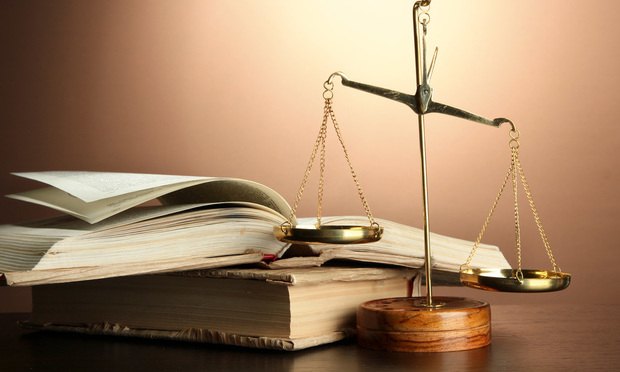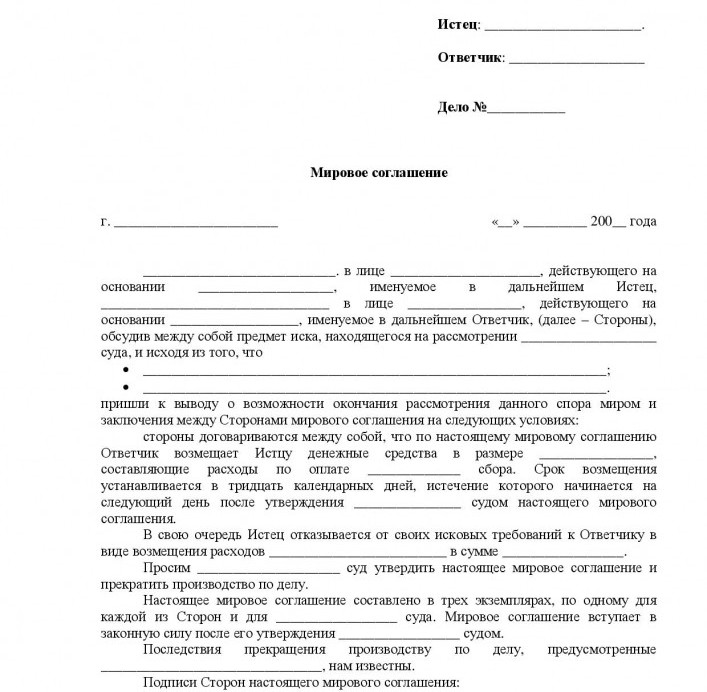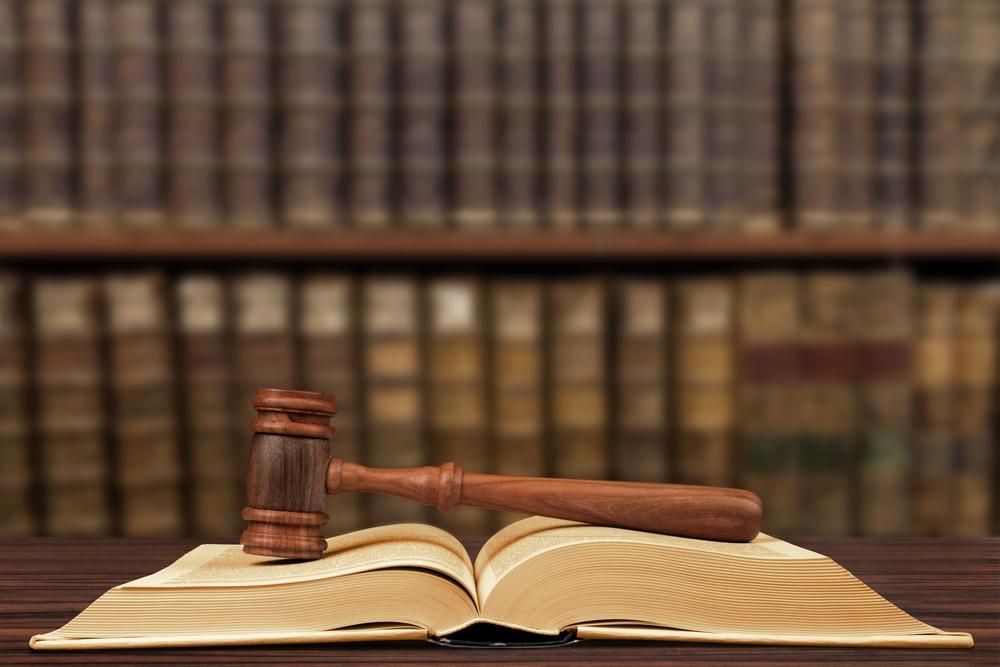Civil proceedings in court are quite simple and understandable. In them usually as a plaintiff and defendant are private individuals. Different disagreements may arise between them, represented by the purpose of the alimony, the division of property, or other similar problems. Citizens have to go to court due to the fact that they have too bad relationships, so they can not resolve the dispute in a peaceful way. Additionally, commercial or government organizations may be participants in the process. In a civil process, a settlement can be made at any time. This method of resolving disagreements is considered the most acceptable for both participants in the process. Using such an agreement, each party can achieve profitable results.
The essence of the procedure
The most optimal outcome of a court is considered to be a conciliation procedure in a civil proceeding. An amicable settlement is drawn up solely by mutual agreement, when the participants in the process were able to come to any consensus on resolving the differences that arose. After signing this document, the trial is terminated. This is due to the fact that under Art. 220 of the Civil Code is not allowed for the court to make any decision if there is a competently drawn up and officially signed amicable agreement. An exception is when the composition of the parties changes.
Based on this document, participants in the process have obligations to fulfill any requirements. But the agreement does not cancel the previously taken obligations represented by a pledge or guarantee.
The conclusion of a settlement agreement in a civil process can be carried out at any stage of production. The terms of this document are most often developed by hired lawyers. To do this, focus on the provisions of Art. 39 Civil Code. When examining this document, the judge must make sure that the interests of any participant in the process or even third parties are not violated. If the parties inform the judge that they are ready to sign a settlement, then they are given the optimal amount of time for this.
The agreement shall enter into force 15 days after its recognition as legitimate.

Advantages of making an agreement
The conclusion of a settlement agreement in the civil process has many undeniable advantages. These include:
- each side can achieve favorable conditions;
- some indulgence is given to the participant who initiates the signing of this document;
- litigation costs are reduced;
- the amount of time spent in court proceedings is reduced;
- after signing the agreement, half the value of the fee paid by the plaintiff is returned;
- the contract is valid from the moment it is approved by the judge;
- all conditions must be strictly observed by the parties to the process;
- all points are implemented within strictly established deadlines, otherwise, coercive measures are applied to the violator by the court;
- clerical work on this case ends, and such a decision cannot be changed on the basis of an appeal.
The most significant advantage is that participants in the process can achieve mutually beneficial conditions.

disadvantages
But the use of a settlement agreement has some drawbacks.These include the fact that it is impossible in the future to present any claims to the other party after signing the agreement.
It will not be possible to file another lawsuit, which includes additional claims or seeks moral compensation. Therefore, before signing this document, each participant should carefully study its provisions. It will not be possible to reopen the case or review its results even if any new circumstances are discovered.
Based on judicial practice, it is almost impossible to challenge a judicial act. Therefore, the parties to the process should be careful in drafting such a document so as not to encounter the negative consequences of concluding a settlement in a civil process.

Who can conclude?
A settlement may be made between individuals or companies. Additionally, the signing of this document between a citizen and an enterprise is allowed. It is allowed to draw up an agreement by foreign citizens acting as participants in the trial. For this, it is permitted to attract official representatives with a notarized power of attorney.
If the plaintiff or defendant has a representative, then you can not come independently to court hearings. The settlement agreement is signed by a trustee.
Such an agreement cannot be concluded by third parties, representatives of the prosecutor's office or state institutions. They do not have any material interest, therefore they do not have the right to sign legal contracts.

Main requirements
The terms of concluding a settlement agreement in the civil process may vary slightly, but all participants should know what requirements are presented to this document. The main such requirements include:
- all items contained in this documentation should be directly related to the subject of the claim, for example, if people share common property, it is not allowed to include in the document information about who common minor children will live with;
- all conditions included in the agreement must be real for fulfillment, therefore, if there are points that are simply impossible to implement physical, the court will not accept such a document;
- each participant in the process must voluntarily agree to the signing of this document, so there is no pressure or blackmail;
- during the preparation of the documentation, the interests of all persons who participate in the process are taken into account, therefore, during the formulation of the text, it is important to consider all possible outcomes of certain actions.
If this agreement is drawn up during the process related to the bankruptcy of the debtor, then all creditors must agree to sign the agreement, for which they formally decide at the meeting.

Compilation rules
The process of concluding a settlement agreement in a civil process is considered quite simple if all the above requirements are met. Its rules include:
- if one participant decides to draw up an agreement, he must file a request with the judge;
- the court, on the basis of this petition, adjournes the hearing, which gives the parties the opportunity to come to some kind of compromise, after which the decision is officially and documented;
- It is allowed to draw up a preliminary agreement in which not material problems are solved, but any other issues that are of significant significance for the participants in the process.
For consideration, the court is handed over only fully completed documentation containing the necessary data.

What information is included?
Each participant in the trial should understand the peculiarities of concluding a settlement agreement in a civil process.If the participants are citizens, then they do not have the necessary knowledge for these purposes. Therefore, it is advisable to seek the help of experienced lawyers. The following information is mandatory included in the agreement:
- name of the court in which the case is being examined;
- process details;
- data on direct participants are given;
- The circumstances that led to the trial are listed;
- disagreements between the plaintiff and the defendant are indicated;
- information is provided on how the compromise was reached;
- lists all the conditions that must be observed by the plaintiff and defendant;
- all conditions should be clearly and clearly defined so that there is no opportunity to challenge information;
- the period during which the requirements of the agreement must be complied with;
- if proceedings are being conducted in relation to any real estate object, then its address is given, as well as information from the cadastral and technical passport;
- often in addition, the document indicates the rules for the distribution of costs for the trial, although this condition is not mandatory.
As soon as the document is completed, it is handed over to the judge. The procedure for concluding a settlement agreement in a civil proceeding is actually considered simple. It can be implemented at any time, and it can also be initiated by both the defendant and the plaintiff. The court only accepts documentation provided that it does not violate the rights and interests of the parties to the process and third parties. An example of a settlement agreement in a civil process can be studied below.

Consequences of signing
Before signing this document, each participant should carefully study all its conditions. The consequences of concluding a settlement in a civil proceeding are not always positive. Based on Art. 173 CC a written document is included in the case file. After that, the judge tells what the consequences of such a decision are for each participant. Then the judge goes to the deliberation room, which allows him to make a decision, announced to the defendant and the plaintiff.
The consequences of concluding this agreement include the fact that participants are required to fulfill all the conditions prescribed in this document.
Grounds of appeal
The conclusion of a settlement agreement in a civil process is permitted only after its approval by the court. After that, a solution and definition is published. It is quite difficult to challenge such documents, but it is possible to appeal the documents if there are good reasons.
To this end, the participant in the process lodges an appeal or cassation appeal against the unlawful actions of a judge. But one must have evidence of such actions. The complaint is not submitted to a direct agreement, but to a court decision. It is indicated which particular rules and rights were violated by the judge. For example, the document does not contain exact dates within which obligations must be fulfilled.

Consequences of failure to comply with the requirements of the agreement
Often, parties to a lawsuit make up a settlement in a civil proceeding. The procedure is considered operational and has many advantages. If any participant refuses to comply with the requirements of this document, then coercive measures are applied to him by the bailiffs, the court, the prosecutor's office or other officials.
Therefore, before signing this document, you should make sure that its conditions are optimal and beneficial for the plaintiff and defendant. It is almost impossible to challenge him.
Conclusion
A settlement can be drawn up at any stage of the civil process. It has many advantages for each participant. It includes conditions that are beneficial to the plaintiff and defendant.
Parties to the process should take into account that the conditions prescribed in this document are binding.It is almost impossible to appeal or change the content of the agreement.
